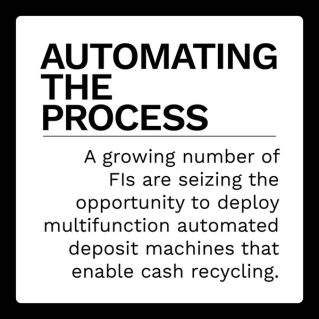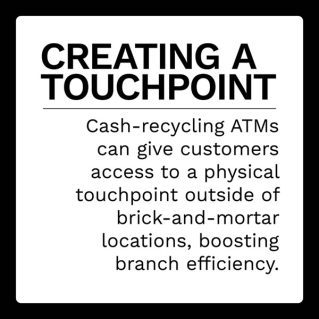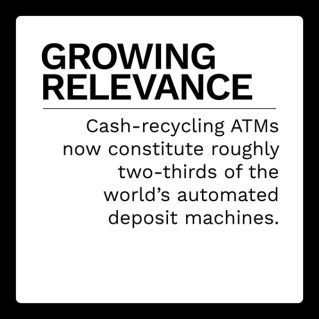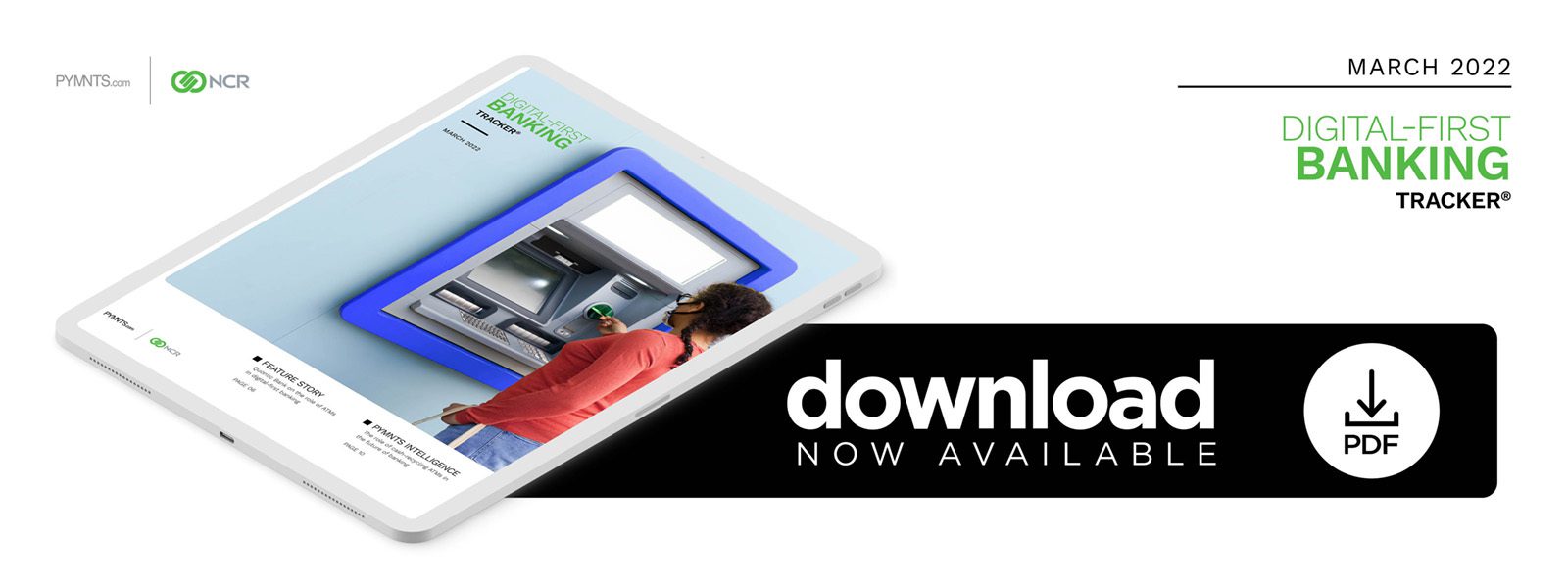Offering Bitcoin Account Access, Nixing Fees, Helps FIs Take ATM Tech Into the Future

Banking customers are increasingly reliant on digital tools for their banking needs, but 41% still use ATMs for some portion of their transactions. At the same time, the total number of ATMs deployed across the globe is declining, even as the functionality provided at ATMs is on the rise. Accommodating this decline in total deployments is the increased viability and usability of ATMs, as well as functions such as cash recycling, which enables ATMs to operate with fewer human work hours being dedicated to keeping them functioning.
Cash-recycling ATMs can take deposited cash and process it to dispense for future withdrawals. In comparison, a traditional ATM has one cassette that holds cash for withdrawals and another that holds deposited cash. That necessitates constant maintenance, with personnel traveling around to ATMs to swap out cassettes and staff having to process both the deposit and withdrawal cassettes at a central location. While this process is not completely eliminated by cash recycling, the number of trips to ATMs and the amount of handling of cash by human workers is greatly reduced, saving on both time and resources while also ensuring against the introduction of human error into the process.
This month’s Digital-First Banking Tracker® will examine how more ATM network providers and financial institutions (FIs) are catching on to the appeal of cash-recycling ATMs and what this means for the future of digital-first banking.
Around the Digital-First Banking World
As FIs and ATM network operators continue to update their fleets and incorporate the latest digital banking tools, cash-recycling ATMs have gained popularity, in part because they are no longer seen as significantly adding to the cost of new ATMs. Among automated deposit terminals (ADTs) deployed globally, 65% are cash-recycling units. The total worldwide deployment of ADTs rose 1% in 2021, even as the overall number of ATMs fell. As FIs and ATM network operators adjust to a world with fewer but more sophisticated ATMs, cash recycling promises several benefits to maintaining and operating their fleets.
 While cash-recycling ATMs are simplifying the physical side of banking, FIs of all shapes and sizes are continuing to keep up with the digital transformation. Many community banks, in particular, are still finding their footing regarding digital banking tools. Driven to compete with larger FIs and FinTechs, community banks have to determine which digital products and services are a priority to appeal to both existing and potential customers. What that looks like can vary significantly from community bank to community bank, with 29% of community banks even looking at offering cryptocurrency solutions within the next year and a half. However, not all community banks are sure of what they will do next concerning digital innovation, as only 48% said they have a clear plan regarding how to proceed.
While cash-recycling ATMs are simplifying the physical side of banking, FIs of all shapes and sizes are continuing to keep up with the digital transformation. Many community banks, in particular, are still finding their footing regarding digital banking tools. Driven to compete with larger FIs and FinTechs, community banks have to determine which digital products and services are a priority to appeal to both existing and potential customers. What that looks like can vary significantly from community bank to community bank, with 29% of community banks even looking at offering cryptocurrency solutions within the next year and a half. However, not all community banks are sure of what they will do next concerning digital innovation, as only 48% said they have a clear plan regarding how to proceed.
For more on these stories and other digital-first banking developments, check out the Tracker’s News and Trends section.
Quontic Bank on the Role of ATMs in Digital-First Banking
Brick-and-mortar FIs have been increasingly reliant on ATMs with enhanced digital capabilities to provide customers with a growing array of products and services, but FinTech and neobank customers also need access to cash deposits and withdrawals.
In this month’s Feature Story, Grace Pace, senior vice president of digital banking at Quontic Bank, talks about the importance of ensuring digital-first banking customers have access to ATMs and the future of physical touchpoints in digital-first banking.
PYMNTS Intelligence: Cash Recycling in the Future of ATMs
As FIs and ATM network providers transition to ever-more technologically-enabled ATMs, single-function ATMs that do nothing other than dispensing cash are becoming less and less common. The overall cost of these more advanced machines is not increased significantly by the addition of cash-recycling capabilities, and the added benefits of cash recycling are starting to gain attention as the cost gap shrinks. Cash is not going away yet, but cash-recycling ATMs can reduce the cost of maintaining fleets while ensuring up-time and even a greater variety of denomination options for customers making withdrawals.
This month’s PYMNTS Intelligence looks at the growing popularity of cash-recycling ATMs and the benefits they offer to operators and customers.
About the Tracker
The Digital-First Banking Tracker®, a PYMNTS and NCR collaboration, examines the latest trends and developments shaping the digital-first banking space and the role that cash recycling will have in the continuing importance of ATMs for all types of FIs.
